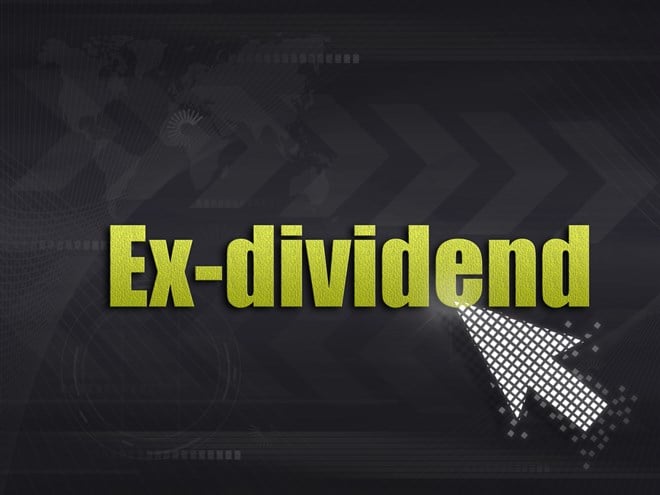
Whether you're a newcomer to the world of dividend stocks or a veteran, the question of whether to buy before the ex-dividend date will always be one to ponder. Buying a dividend stock before the ex-dividend date seems evident since you would be entitled to receive the dividend. However, if you understand what happens when a dividend is distributed, the answer gets more involved.
New dividend investors mistakenly believe that a dividend is a free money for shareholders. It's a way of getting income from holding dividend stocks. That is only partially true. The other part often overlooked is that while a high dividend yield seems promising, the reason for a high yield is due to the falling stock price. So ask yourself, how good is a 10% annual dividend yield if your dividend stock has lost (25%) for the year?
What is an Ex-Dividend Date
There are four important dates to remember when a company declares a dividend:
- Declaration Date: This is the date when a company announces or declares a dividend. A company will issue a press release on the declaration date like, “XYZ Board of Directors Declares a Quarterly Dividend ."There will be three critical dates noted in the announcement.
- Ex-Dividend Date: This is the eligibility to receive the dividend cut-off date. You must own the stock before the ex-dividend date to receive the subsequent dividend distribution. For example, if XYZ has an ex-dividend date of April 15, 2023, you must own the shares before April 15, 2023, to receive the upcoming dividend. Buying stock on or after the dividend date means you don't receive the upcoming dividend. However, if you decide to hold the shares through the next ex-dividend date, you can receive the dividend afterward.
- Record Date: This is when shareholders on the registry are officially determined to receive the upcoming dividend. Buying the stock before the ex-dividend date gets you on the company’s shareholder registry to receive the dividend.
- Payment Date: As the name says, it's the date the dividend is paid out to shareholders. It's payday, where the cash is deposited into your brokerage account for the dividend amount multiplied by the number of shares you owned on or before the record date.
Buy Before Ex-Dividend Date for Income Only
If you're a long-term investor and receiving income from holding dividend stocks is your top priority, buy the stock before the ex-dividend date. This qualifies you to receive the upcoming dividend payment. However, be very aware that the stock price tends to drop by the dividend payout amount on the ex-dividend date. In other words, if XYZ has declared a $0.50 quarterly dividend and the stock is trading at $20.50 before the ex-dividend date, then expect the stock to drop (-$0.50) on the morning of the ex-dividend date and open around $20.00. You lose ($0.50) on the stock price to get the $0.50 dividend payment on the payment date. It cancels itself out. Seasoned investors may also consider a dividend capture strategy to time ex-dividend dates.
Long-Term Investment Horizon is Key
However, as a long-term investor, the dividend stocks tend to recover the dividend payment amount in time. This is often the case in bull markets. Bear markets are trickier, depending on the underlying stock's earnings quality and the macro market climate. You could get a double whammy in a bear market, with the stock falling by the dividend payment further accelerated by further selling in a bear market. If the company misses earnings or lowers guidance, shares can fall further. This is where the long-term investor horizon comes into play.
Assuming the company is still cash flow positive and growing, shares may recover the dividend and rise in the long term. The risk falls on whether the company can maintain its earnings growth and dividend payments. After all, you must generate cash profits to pay out cash dividends. For this reason, many seasoned dividend investors will go with blue chip stocks and dividend aristocrats, which pay a lower dividend but have a long history of consistent dividend payments.
Skip the Ex-Dividend Date for Stock Appreciation
If you're evenly balanced for capital appreciation and income, consider buying on or after the ex-dividend date. Remember that the market will discount the underlying share price on the ex-dividend date. This means you get the shares cheaper with more upside as dividend stocks tend to recover their dividend gaps in the long run. In this scenario, you are getting discounted shares and theoretically regaining the lost dividend amount in the appreciation of the underlying shares but not receiving the upcoming dividend payment.
If the market continues to sell off, you have a buffer from the gap. It's always tougher to hold dividend stocks in a falling market, but that's where dollar cost averaging opportunities arise, assuming the company is still churning out profits.

